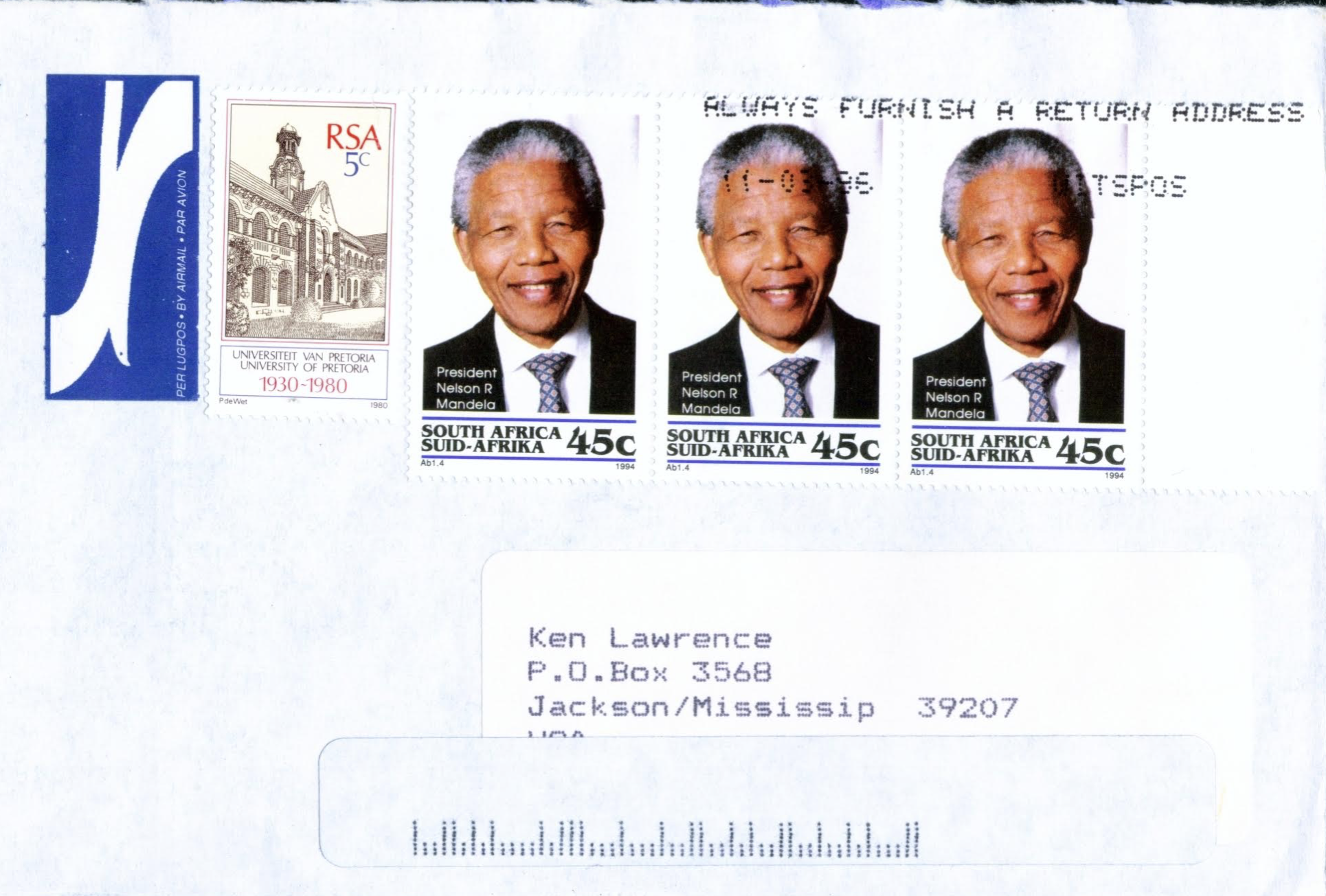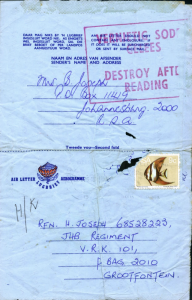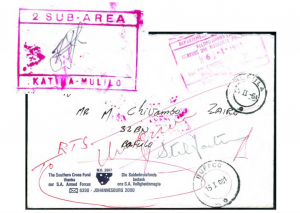Ken Lawrence is a lifelong American activist and writer, a veteran of the struggle for social justice, equality and liberation. He was an active participant in SNCC (the Student Non-Violent Coordinating Committee), a member of Facing Reality (the C.L.R. James tendency), an important member of Sojourner Truth Organization, and a contributing editor of Covert Action Information Bulletin. In Ken’s own words written to us last week, “I still have an oar in the water.” He turned eighty a few days ago.
On top of all of his organizational and movement skills, Ken is also a renowned philatelist, and is a regarded as such by fellow stamp collecting experts and buffs. He recently shared the following article (presentation) with us. It is a memoir describing his experience in the world of African liberation work seen through the eyes of a philatelist and activist here. As Ken denotes in detail at the beginning of the article, he presented it at a May, 2017 symposium on Postal History in Southern Africa at Regis College in Massachusetts. The presentation was also run in an issue of Forerunners Magazine (a stamp collectors journal for Southern Africa, #88, Vol. XXX, No. 3, March-June, 2017). As an interesting aside, Ken is the JC character referred to in the article entitled Goin’ Down South by Mike Morgan in the brand new Hard Crackers Magazine, Issue #9 (see pages 28 and 29). Ken was the Jackson, Mississippi point person and organizer of the SWAPO/SAMRAF speaking tour over 42 years ago. Ken’s article makes for fascinating reading, and there are lots of images to back it up. You will not be bored.
***
[Adapted from a presentation of the same title at the May 4, 2017, postal history symposium “Philately and Postal History of Southern Africa” sponsored by the Spellman Museum of Stamps and Postal History and the Philatelic Society for Greater Southern Africa at Regis College in Weston, Massachusetts. Ken Lawrence may be reached at apsken@aol.com.]
To set the mood for my presentation let me begin with this epigraph:
— You’ll be quiet all evening, she said. Unless someone comes to talk football. And even they don’t come so often. We might be in the desert.
He looked at her helplessly.
— Sometimes I wish that I were a stamp, she said. Then you might look
at me.
That was Nella van Vlaanderen’s cri de coeur to her husband Pieter in Alan Paton’s 1953 novel Too Late the Phalarope. Pieter, the protagonist of Paton’s apartheid tragedy, was an Afrikaner policeman and a stamp collector. Nella’s searing charge laid bare the truth: Stamps meant more to Pieter than she did. From those memorable lines Paton’s readers understood why Pieter engaged in a forbidden tryst with an African woman, which led to his and his family’s ruin.
Too Late the Phalarope is a masterpiece of philatelic fiction. If you have not read it, put it at the top of your library request list.
I began to collect stamps in 1953, the year that Paton’s book was published, when I was 11 years old. My stamp collection taught me about imperialism, and especially about imperialist rule in nearly all of Africa.
Africa was an early waystation for navigators during the Age of Exploration, and for more than 500 years suffered the gruesome consequences of conquest, colonization, and the Atlantic slave trade. Europeans initially settled along the coastal areas, and gradually advanced into the interior.
Dutch settlers had established the Boer republics of Transvaal and Orange Free State in the mid-19th century. At the 1884-1885 Berlin Conference the other European imperialist powers — Belgium, Germany, Spain, France, Great Britain, Italy, and Portugal — had divided the rest of the African continent among themselves, with the exception of Liberia, Ethiopia, and Morocco. Italy tried and failed to conquer Ethiopia from 1885 to 1896. In the early 20th century Britain defeated the Boers and absorbed their territories into the Union of South Africa. France and Spain subjugated Morocco. In the aftermath of World War I, the victors took over Germany’s African colonies. There things stood until after World War II, when popular indigenous insurgencies in Asia set examples of liberation from colonial rule.
My collection also taught me that oppressed people were fighting to be free from imperial domination. The mantra of my high school International Relations class was, “When people are dissatisfied, they revolt!” By the time I began to put stamps in my album, Britain had left Palestine, India, Pakistan, Burma, Ceylon, and Malaysia; Indonesia had freed itself from Dutch rule; and Indochina had won from France at least provisional independence and self-government.
But Africans remained in bondage. In 1948 the Republic of South Africa had instituted apartheid to entrench white supremacy, much like the odious segregation of the races in the United States, while in the rest of the continent only Liberia and Ethiopia were governed by indigenous Africans.
The uneventful decolonization of Libya, Sudan, and Morocco, and a mercifully brief armed struggle that preceded the independence of Tunisia in the 1950s kindled hope that the European imperialists had accepted the judgment of history and understood that it was time for them to accept self-government in Africa and leave. The coup d’état led by Gamal Abdel Nasser in Egypt in 1952, followed by the Suez crisis in 1956, put an end to British rule there.
A byproduct of Nasser’s revolution enhanced my philatelic education. In Chicago, Marshall Field’s stamp department displayed treasures from ex-King Farouk’s collection, which were the first rare stamps I got to view and study at close range.
The African transition that caught my attention was the transfer of power in 1957 from the British colonial administration in Gold Coast to the independent government of Ghana led by Kwame Nkrumah, which also incorporated the British sector of neighboring Togoland. The Figure 1 cover is a postal relic of that event.
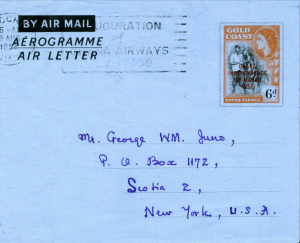 Figure 1. The Ghana Independence overprint on this Gold Coast aerogram commemorated the end of British colonial rule.
Figure 1. The Ghana Independence overprint on this Gold Coast aerogram commemorated the end of British colonial rule.
Next came the French departure from sub-Saharan Africa: Guinea in 1958; Cameroun, Senegal, Mali, Chad, Togo, Upper Volta, Ubangi-Shari, Niger, Gabon, Dahomey, Ivory Coast, Middle Congo, Mauritania, and Madagascar in 1960.
Britain took leave from Somalia and Nigeria that year, followed by Sierra Leone and Tanganyika in 1961, Uganda in 1962, Nyasaland, Northern Rhodesia, and Zanzibar in 1963, Gambia in 1965, Basutoland and Bechuanaland in 1966, Mauritius and Swaziland in 1968.
Belgium exited Ruanda in 1961 and Urundi in 1962. Spain gave up its African colonies between 1968 and 1975. With the exception of limited military crackdowns by colonial hardliners, those transitions were peaceful.
Splendid postage stamps heralded each of these transfers of power.
But elsewhere in Africa where rich land and natural resources remained ripe for harvest, extraction, and plunder, popular aspirations were thwarted as colonial armed forces not only waged war to perpetuate imperial rule, but they also instituted cruel mass detention and torture of suspected insurgents, massacres of civilians, and assassinations of popular leaders.
The Mau Mau insurrection in Kenya lasted from 1950 to 1960. By killing more than 12,000 insurgents of the Kenya Land and Freedom Army and its supporters, Great Britain prevailed militarily, but the British public at home came to regard their colonials in Kenya as indefensibly racist and cruel.
The People of Kenya Speak for Themselves by Mbiyu Koinange, published in 1955, taught me about Kenyans’ aspirations for freedom. The British had arrested Jomo Kenyatta, the leader of the Kenya Africa Union, in 1952, and charged him with involvement in the rebellion.
The Figure 2 cover represents an early stage of the British counterinsurgency war against the Mau Mau.
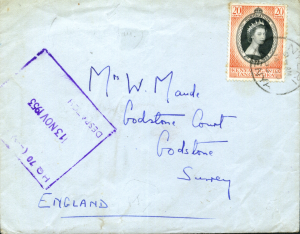
Figure 2. This 1953 cover was posted from the headquarters of the 70th East Africa Infantry Brigade at Nyeri, in the central highlands of Kenya, a British Army counter-insurgency unit that waged war against the Mau Mau.
I did not know it at the time, but C.L.R. James, who became my political mentor in the 1960s, had been a founder and leader of the London group that organized and trained African independence fighters in the 1930s and 1940s, including Kwame Nkrumah and Jomo Kenyatta.
The fall 2013 special issue of the CLR James Journal includes a memoir of my political involvement in his organization and describes his activities in Chicago during the year that he lived in my home while he taught in the Black Studies program at Northwestern University. But that wasn’t until 1969. Readers who desire more information about James’s career might be interested in the 2015 motion picture Every Cook Can Govern: Documenting the life, impact & works of CLR James, available on DVD from www.clrjames.uk.
In February 1960, when I was 17 years old, civil-rights sit-in protests against racial segregation began at a Woolworth’s lunch counter in Greensboro, North Carolina. The organizers of those protests founded the Student Nonviolent Coordinating Committee (SNCC), which we called Snick, to spread the movement across the South. In Chicago, I joined the picket line at Woolworth’s in solidarity with SNCC. That fall I attended the SNCC convention at Morehouse College in Atlanta.
Among my earliest memories of activism as a young socialist in 1960 is the day we picketed the British consulate in Chicago chanting “Free Jomo Kenyatta!” That summer I attended the Young People’s Socialist League summer school at the University of Chicago. Kenya labor leader Tom Mboya led a seminar on the freedom struggle in his country, and Daniel Gallin, then director of the International Union of Socialist Youth in Geneva, led one on the independence struggle in Algeria.
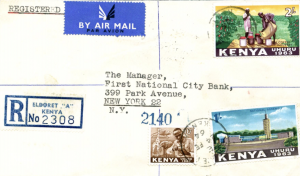 Figure 3. Uhuru, on these stamps, is the Swahili word for freedom. They signify that Kenya had won its freedom from British colonialism in 1963.
Figure 3. Uhuru, on these stamps, is the Swahili word for freedom. They signify that Kenya had won its freedom from British colonialism in 1963.
Jomo Kenyatta was released from prison in 1961. With independence in 1963, denoted by the stamps on the Figure 3 cover, he became Kenya’s first president. Soon afterward, Kenya’s vice president, Oginga Odinga, made a state visit to the United States. In Atlanta, SNCC leaders showed him the racially segregated parts of the city that the State Department had tried to hide. The SNCC Freedom Singers immortalized his visit in a song titled “Oginga Odinga.”
In 2013, fifty years after Uhuru, the British government agreed to compensate more than 5,000 Kenyans who had been tortured and abused during the insurgency, and in 2015 Britain erected a Mau Mau memorial statue in Uhuru Park at Nairobi as a symbol of contrition and desire for reconciliation.
In 1959 I had chaired a committee that organized a public meeting in Illinois for a representative of the Algerian National Liberation Front. After a bitterly fought war of independence from 1954 to 1962, memorialized in the iconic motion picture Battle of Algiers by Gillo Pontecorvo, the French finally withdrew, but bitter reprisals continued for years afterward on both banks of the Mediterranean.
The 1961 French military cover in Figure 4 cover represents the war, and the 1962 United Nations souvenir in Figure 5 represents the French defeat.
 Figure 4. A 1961 French military cover from Algeria to France during the height of the anti-colonial insurrection led by the National Liberation Front required no postage.
Figure 4. A 1961 French military cover from Algeria to France during the height of the anti-colonial insurrection led by the National Liberation Front required no postage.
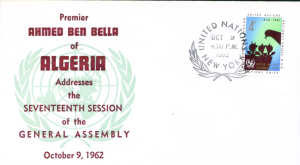
Figure 5. Ahmed Ben Bella, the first president of independent Algeria, addressed the United Nations in 1962, commemorated by this souvenir cover.
Farther south on the continent, a tragedy had begun that continues to defy humanitarian solution. Belgium had formally exited the Congo in 1960, but imperial interests and their armed mercenaries fought to keep the country’s mineral wealth by dismembering it. Patrice Lumumba, the man who had led the struggle for independence was assassinated, as was United Nations General Secretary Dag Hammarskjold on his mission to save the country from civil war.
The war began with the secession of Katanga province in the South, as the Belgian mining companies sought to retain their grip on the country’s most valuable resources.
United Nations forces arrived in the Congo shortly after independence. Take note of the Belgian colonial stamps on the Figure 6 cover from 1960. The Security Council had resolved that Congo was to be a unitary state, but UN forces did not succeed in suppressing the secessionists until late January 1963. The last UN troops departed in June 1964. The unified country, known from 1971 to 1997 as Zaire, has been plagued by corrupt governance and armed strife ever since.
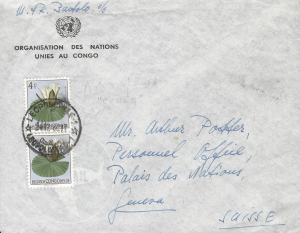 Figure 6. United Nations forces arrived in the Congo in 1960 to prevent secession of Katanga province, location of the country’s richest mineral resources, and remained until 1964.
Figure 6. United Nations forces arrived in the Congo in 1960 to prevent secession of Katanga province, location of the country’s richest mineral resources, and remained until 1964.
In March 1960 South African police had shot and killed 69 people, and injured 180 more, who had staged a peaceful protest at Sharpeville against the pass laws that prevented free movement of black Africans.
On the fifth anniversary of the Sharpeville Massacre, about 700 members of the Student Nonviolent Coordinating Committee, Students for a Democratic Society, the Congress of Racial Equality, and the National Student Christian Federation picketed the Chase Manhattan Bank in New York as a protest against loans to apartheid South Africa.
Several SDS protesters entered the bank, staged a sit-in, and were arrested there while SNCC staged a sit-in at the South African consulate. Coordinated actions in Boston, Detroit, and San Francisco targeted other major firms and financial institutions that supported the apartheid regime.
These protests raised the visibility of anti-apartheid activism in this country, and linked it to the ongoing struggles against racial segregation and discrimination here. The Figure 7 button is part of my “Freedom Now!” collection of worldwide political protest memorabilia that I exhibited at the old American Philatelic Center in State College in 2001 and donated to the Pennsylvania State University labor archive in 2010.
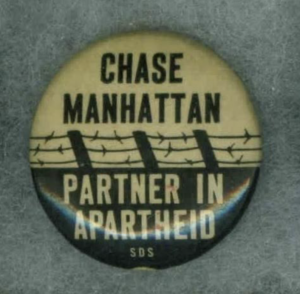 Figure 7. This button from a 1965 anti-apartheid protest in New York organized by Students for a Democratic Society, the Student Nonviolent Coordinating Committee, the Congress of Racial Equality, and the National Student Christian Federation, is part the “Freedom Now!” collection of worldwide political protest memorabilia that the author donated to the Pennsylvania State University labor archive in 2010.
Figure 7. This button from a 1965 anti-apartheid protest in New York organized by Students for a Democratic Society, the Student Nonviolent Coordinating Committee, the Congress of Racial Equality, and the National Student Christian Federation, is part the “Freedom Now!” collection of worldwide political protest memorabilia that the author donated to the Pennsylvania State University labor archive in 2010.
The finding aid can be read at www.libraries.psu.edu/findingaids/6312.htm. Many of my buttons, posters, t-shirts, bumper stickers, armbands, and other items can be viewed on-line at www.flickr.com/photos/pennstatespecial/albums/72157629489879558, including the frame that shows the button illustrated here.
In 1965 the government of Southern Rhodesia headed by Ian Smith issued a Unilateral Declaration of Independence from Great Britain — not to secure freedom for the African majority but to preserve the power of the white minority in a nation that was 80 percent black. A member of Smith’s Rhodesian Front party created the Figure 8 cover to commemorate the event.
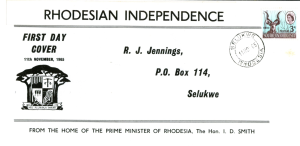
Figure 8. Rhodesia’s Unilateral Declaration of Independence in 1965, recalled by this cover, was a desperate attempt to perpetuate white minority rule in a country in which black Africans were an overwhelming majority of the population.
With the exception of apartheid South Africa, no country in the world recognized the independence of Rhodesia. The postal consequence was that Rhodesian stamps were not valid to pay postage on international mail. Figure 9 shows a cover from Essexvale, Rhodesia, to Luanshya in neighboring Zambia that required the recipient to pay postage due because the Rhodesian stamp was not accepted.
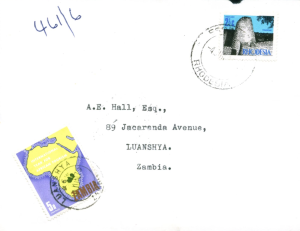
Figure 9. Only apartheid South Africa recognized the independence of Rhodesia. Other countries rejected the validity of Rhodesian postage stamps, as can be seen on this 1970 cover from Essexvale, Rhodesia, to Luanshya, Zambia, with postage due collected from the recipient.
The Rhodesian stamp on that cover pictures part of the ruins of Great Zimbabwe, built of dry stone without mortar from the 10th to the 15th centuries by the ancestors of the Shona people, first reported by a European traveler in the year 1531. The Rhodesian government denied that such structures could have been constructed by black Africans, but the liberation movements named themselves the Zimbabwe African National Union (ZANU) and the Zimbabwe African Peoples Union (ZAPU). Today the country is named for this site, which is a national monument.
In 1972, not long after I moved to Mississippi as the Deep South representative of the Southern Conference Educational Fund and reporter for the SCEF newspaper The Southern Patriot, I joined and wrote about a protest at Burnside, Louisiana, where members of the International Longshoremen’s Association AFL-CIO, supported by students from Southern University at Baton Rouge, refused to unload a shipment of Rhodesian chrome.
Along with the boycott of Rhodesian chrome, we supported and helped organize a consumer boycott of Gulf Oil Company products to protest its petroleum production in Portuguese Angola and a boycott of Polaroid products to protest that firm’s sales of photographic equipment and supplies used to implement the hated identification pass system in South Africa. In 1974 we organized protests to prevent the Southern Company, which owned electric power companies in the Deep South states, from importing South African coal for their generators.
I became personally involved in solidarity with the Zimbabwe liberation struggle. Tapson Mawere, North American representative of ZANU, became my friend. I also became the principal publisher of ZANU literature distributed in this country, including a pamphlet titled African Freedom Fighters Speak for Themselves in which members of the military arm — the Zimbabwe African National Liberation Army (ZANLA) — told of their struggles.
Most of my ZANU-ZANLA publications can be viewed on-line at the African Activist Archive website of Michigan State University at http://africanactivist.msu.edu, searchable under the Freedom Information Service publishing imprint.
The 1974 revolution in Portugal abruptly transformed the balance of power in Africa. The new Portuguese government almost immediately recognized the independence of Guinea-Bissau. In 1975 it withdrew from Cape Verde, Mozambique, Angola, São Tomé and Príncipe.
The independence of Mozambique with a government sympathetic to the Zimbabwe freedom struggle opened up a new cross-border front for ZANLA. Likewise the independence of Angola offered sanctuary to the People’s Liberation Army of Namibia (PLAN), the armed wing of the South West Africa People’s Organization (SWAPO).
As the Rhodesian and South African governments grew desperate to suppress these insurgencies, they relied on mercenary soldiers to augment their conscript armies. Major Robert K. Brown of the United States Army Special Forces Reserve (later Lieutenant Colonel Brown) facilitated this effort by launching Soldier of Fortune magazine in the fall of 1975. The first issue was devoted to recruiting mercenaries for Rhodesia; the second issue, published the following spring, recruited for the covert war in Angola.
Although Brown’s magazine gave the appearance of a private operation frowned upon by the U.S. government, my comrades in Chicago secured proof that the recruitment center for Rhodesian mercenaries was the headquarters of the 12th Special Forces Reserve at Arlington Heights, Illinois. They published a booklet titled Guns for Hire: How the C.I.A. & U.S. Army Recruit Mercenaries for White Rhodesia.
Meanwhile, as a collector of military postal history I got on the mailing list of the Rhodesian Veterans Association offices in Arkansas and California. RVA newsletters provided valuable insights into the culture, strengths, and vulnerabilities of the hired soldiers. I also corresponded with individual members who agreed to supply covers.
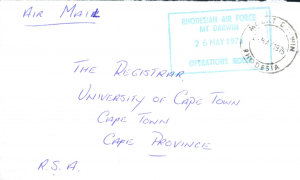 Figure 10. This 1975 Rhodesian Air Force cover originated from the unit at Mount Darwin that planned and directed raids against Zimbabwe People’s Revolutionary Army (ZIPRA) camps in Zambia and Zimbabwe African National Liberation Army (ZANLA) camps in Mozambique.
Figure 10. This 1975 Rhodesian Air Force cover originated from the unit at Mount Darwin that planned and directed raids against Zimbabwe People’s Revolutionary Army (ZIPRA) camps in Zambia and Zimbabwe African National Liberation Army (ZANLA) camps in Mozambique.
The operations room of the Rhodesian Air Force at Mount Darwin, origin of the Figure 10 cover, planned and directed raids against Zimbabwe People’s Revolutionary Army (ZIPRA) camps in Zambia and ZANLA camps in Mozambique. One attack killed an estimated 1,500 ZIPRA guerrilla fighters. The First Battalion of the Rhodesian Light Infantry, represented by the Figure 11 cover, was the Smith regime’s principal counter-insurgency force.
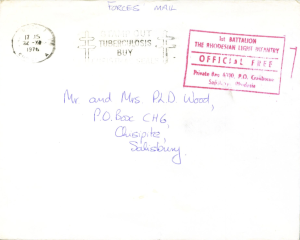
Figure 11. This 1976 military cover was posted at Umtali by a member of the First Battalion of the Rhodesian Light Infantry, the Smith regime’s principal counter-insurgency force.
While this war heated up, Djibouti on the Horn of Africa gained its independence, bringing an end to French rule in Africa, leaving white minority regimes in control of only three besieged lands at the southern tip: Rhodesia, South West Africa, and South Africa.
Against both regular and mercenary armies the Zimbabwe liberation forces were invincible. For the last half of 1979, as the future remained in doubt, the still unrecognized country took the name Zimbabwe Rhodesia, signifying a so-called “internal settlement” that Ian Smith hoped would leave his Rhodesian Front party in effective control, sharing power with Bishop Abel Muzorewa of the African National Council. To the best of my knowledge, the Figure 12 registry envelope is the only officially distributed postal item that used that name for the country.
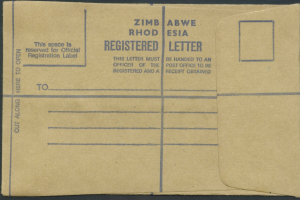 Figure 12. The Smith regime’s short-lived 1979 “internal settlement” renamed the country Zimbabwe Rhodesia, but produced no stamps. This registry envelope might be the only postal artifact issued during that final failed attempt to preserve white minority rule.
Figure 12. The Smith regime’s short-lived 1979 “internal settlement” renamed the country Zimbabwe Rhodesia, but produced no stamps. This registry envelope might be the only postal artifact issued during that final failed attempt to preserve white minority rule.
The British government resumed direct control of Southern Rhodesia in December 1979. Elections were held in February 1980, won by Robert Mugabe’s ZANU Patriotic Front party. Britain granted independence to Zimbabwe on April 14, 1980. Mugabe has been prime minister ever since. The Figure 13 cover is franked with post-independence computer-vended Frama stamps that picture the Great Zimbabwe ruins.
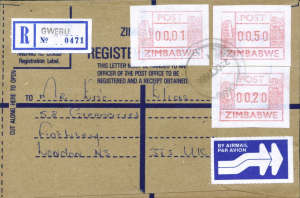 Figure 13. A 1986 registered cover from independent Zimbabwe is franked with computer-vended Frama stamps that include images of the Great Zimbabwe ancient ruins for which the nation is named.
Figure 13. A 1986 registered cover from independent Zimbabwe is franked with computer-vended Frama stamps that include images of the Great Zimbabwe ancient ruins for which the nation is named.
With Zimbabwe liberated, only South West Africa (Namibia) and South Africa remained under white minority rule. As the liberation wars approached their denouement, Angola and Mozambique became the principal front-line states, viewed as the greatest threats to the apartheid regime and its continuing domination of Namibia. Hoping to deprive the liberation movements of cross-border sanctuaries, South Africa, assisted by the U.S. Central Intelligence Agency, instigated and armed African proxies in those countries.
In Angola the CIA backed Holden Roberto’s National Front for the Liberation of Angola (FNLA) in the northeast, and Jonas Savimbi’s National Union for the Total Independence of Angola, known as UNITA, in the southeast. By themselves those forces could not seriously challenge the majority MPLA party, the People’s Movement for the Liberation of Angola.
The Portuguese transfer of power in Angola was scheduled for November 11, 1975. To prevent the MPLA from securing its governance of Angola, South Africa secretly staged a preemptive invasion with the tactical aim of destroying PLAN bases and denying sanctuary to SWAPO. The larger strategic aim was to install a friendly government in Luanda, headed by Jonas Savimbi, which would cease hosting and supporting Namibian freedom fighters.
South Africa had waged war against SWAPO and PLAN since 1966, the year that the United Nations revoked the South African trusteeship over Namibia, thus declaring the continued occupation by the apartheid regime to be illegal. In 1972 the UN General Assembly recognized SWAPO as the sole legitimate representative of the Namibian people.
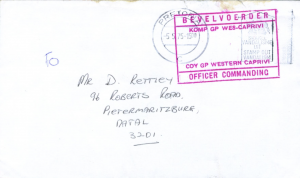 Figure 14. On this 1975 South African military cover from a West Caprivi location in South West Africa, the words “Coy” in English and “Komp” in Afrikaans in the unit cachet meant “company,” a unit of 250 men.
Figure 14. On this 1975 South African military cover from a West Caprivi location in South West Africa, the words “Coy” in English and “Komp” in Afrikaans in the unit cachet meant “company,” a unit of 250 men.
South African forces had been deployed along the Angolan border earlier in 1975, as shown by the Figure 14 cover from a military post in West Caprivi. In these unit cachets and manuscript routing marks “Coy” or “C” in English and “Komp” or “K” in Afrikaans meant “company,” a unit of 250 men.
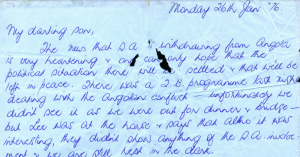
Figure 15. A scarce but exemplary postal marking from the early period of the Angola border war is the bilingual DESTROY AFTER READING cachet on this 1976 air letter to a South African Army rifleman from his mother in Johannesburg. Her message mentioned the army’s involvement in Angola.
The Figure 15 tattered air letter to a South African infantry rifleman in the war zone from his mother at Johannesburg, with the bilingual boxed order DESTROY AFTER READING is an early relic of the border war. “The news that South Africa is withdrawing from Angola is very heartening and one can only hope that the political situation there will be settled and that we’ll be left in peace,” she wrote. “There was a T.V. programme last night dealing with the Angolan conflict. . . . altho it was interesting, they didn’t show any of the South African involvement and we are all left in the dark.”
But her hopes were dashed. The so-called Angolan civil war, actually a war to prevent conquest by South Africa and its Angolan puppets, lasted for 13 years, ending as it had begun with the MPLA in power.
The arrival of Cuban advisors and combat troops reversed the fortunes of the South Africa-mercenary-CIA alliance and their Angolan proxies, and saved the MPLA government. More than 337,000 Cuban soldiers served in Angola, and 2,000 of them died there.
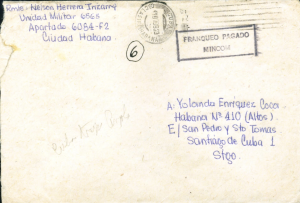
Figure 16. The arrival of Cuban doctors, nurses, engineers, technicians, and above all, armed forces and military advisors, prevented the United States, South Africa, and their Angolan proxies from overthrowing the Popular Movement for the Liberation of Angola (MPLA) government in Luanda.
The late Jose Luís Guerra at the Cuban Postal Museum in Havana gave me the Figure 16 cover, mailed by a Cuban volunteer serving in Angola to his woman friend in Santiago.
Figure 17. Renegades from Angola were enlisted in 32 Battalion, also called Buffalo Battalion, to fight against their countrymen under the command of white South African and foreign mercenary officers. The addressee of this 1981 cover, when the unit was located at Katima Mulilo in East Caprivi, could not be located, so it was returned to the sender.
The addressee of the Figure 17 cover was a member of 32 Battalion, also called Buffalo Battalion, probably the most despised counterinsurgency unit in the South African army. It consisted mainly of former FNLA members from Angola who had sworn allegiance to South Africa, commanded by white South African and foreign mercenary officers. Despite a search in at least two locations this soldier could not be found. Evidently he had left for Zaire, so the letter was returned to the sender.
Katima Mulilo, where 32 Battalion was based, is a town in Namibia on the Zambezi River opposite Zambia at the extreme northeastern end of the Caprivi Strip wedged between Botswana and Zambia. Several South African military units were headquartered there. The 2 Sub-Area command also included forces in Angola. In 1978 PLAN guerrillas had attacked this remote and vulnerable base with rockets, mortars, and automatic weapons, killing 11 and wounding 10 South African soldiers, and inflicting extensive damage.
In 1977 I met in Louisiana with a white South African who was organizing a campaign to promote resistance to military conscription and to assist draft dodgers and deserters to find shelter and support in exile. The new organization was called the South African Military Refugee Aid Fund (SAMRAF), with offices in New York and San Francisco, and a parallel organization in London. I became a member of the SAMRAF advisory board.
SAMRAF published an antiwar newsletter for young white South Africans called Omkeer, which means “About Face,” in English and Afrikaans. Sources in South Africa obtained lists of men scheduled to be drafted into the army, and SAMRAF’s friends mailed copies of Omkeer to them, offering to help them avoid conscription.
By the time the third issue was published in October 1979, the South African Bureau of State Security, known by its acronym as BOSS, had taken notice and regarded us as a threat. BOSS published a counterfeit version of Omkeer with the same front cover but altered text of articles. Here is an example of differences between our genuine Omkeer and the BOSS fake:
In an article about SWAPO by Theo-Ben Gurirab, head of the SWAPO mission to the United Nations and eventually his country’s prime minister, he wrote, “. . . the primary contradiction, at the present, in South Africa, is the struggle for power between the black majority, on the one hand, and the fascist junta, under the leadership of the all-white Nationalist Party, on the other. . .”
The South African government imagined its enemies to consist of a communist conspiracy directed from Moscow, so the alterations in the text were designed to make us appear as Soviet puppets. The BOSS alteration reads, “. . . the primary contradiction, at the present, in South Africa, is between Communism and Capitalism.”
Reality was the opposite of the BOSS fantasy. More of our people were Anglicans and Methodists than anarchists and Marxists. The reason our movements were so effective was because they were independent and democratic. Each organization decided how best to deploy human and material resources to greatest effect. We met and coordinated our work to avoid duplication. We relied on the American Committee on Africa and the Washington Office on Africa to address policy makers and diplomats, and to serve as clearing houses. But because we were autonomous, the damage caused by BOSS’s dirty tricks was limited and had scant lasting effect.
An editorial in a subsequent issue of Omkeer took note of the South African government’s fear of our effectiveness and assured readers that BOSS’s bogus issue had strengthened our resolve. The next BOSS attack on our work was worse. An undercover spy named Clifton Westraad, posing as a deserter from the South African Army, successfully infiltrated our San Francisco office, and from there, our New York headquarters.
Westraad broke into our files and stole SAMRAF’s national and international mailing lists. Fortunately the list of contacts inside South Africa was secure, so none of them were endangered by Westraad’s treachery. But his theft did affect my philatelic activities, as I shall explain below.
On the domestic front the apartheid regime had taken steps to deprive black Africans of citizenship and to establish an artificial white majority in the prosperous parts of South Africa by imposing independence on ethnically homogeneous so-called homelands, better known as Bantustans. The Bantustans consisted of territorially fragmented enclaves. Most black South Africans had never set foot on the soil of their assigned homes.
Transkei was first, in 1976, followed by Bophuthatswana in 1977, Venda in 1979, and Ciskei in 1981. That’s as far as they got. The conservative Zulu leader Mangosuthu Buthelezi of the Inkatha Freedom Party resisted the regime’s pressure to declare Kwa-Zulu independence, and there the project stalled.
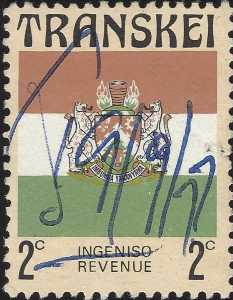 Figure 18. South Africa imposed independence on the Transkei Bantustan in 1976, signified by issues of postage and revenue stamps.
Figure 18. South Africa imposed independence on the Transkei Bantustan in 1976, signified by issues of postage and revenue stamps.
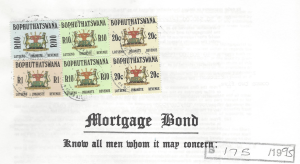
Figure 19. Revenue stamps of Bophuthatswana are shown here on a deed canceled in 1995, after the Bantustan had been reincorporated into South Africa.
The four nominally independent states issued stamps. Figures 18 and 19 present revenue issues of Transkei and Bophuthatswana, respectively. Naturally I wanted to collect stamps of these entities no matter how odious was their origin and purpose, but an embargo forbade their import.
My solution was to swap stamps and covers with a collector in South Africa. Figure 20 shows a cover he sent to me. Figure 21, 22, and 23 covers are from the other nominally self-governing so-called homelands.
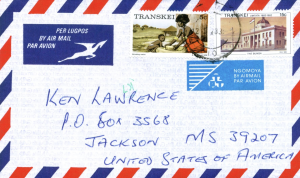 Figure 20. A South African policeman sent this cover to the author from Transkei in 1983.
Figure 20. A South African policeman sent this cover to the author from Transkei in 1983.
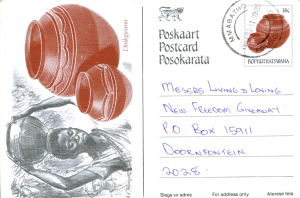
Figure 21. A postal card from Bophuthatswana.
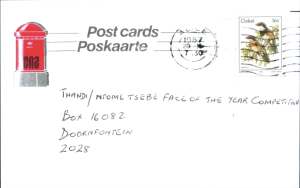
Figure 22. A post card from Ciskei.

Figure 23. A registry envelope from Venda.
As luck would have it, my trading partner was a South African policeman, and to my surprise he wrapped every cover and every packet of stamps in blank official police forms. I wasted no time in passing them on to representatives of liberation movements who put them to effective use in the struggle. But BOSS found out about my activities from Westraad’s infiltration of SAMRAF, and that brought an end to these swaps.
The Bantustans ceased to exist on April 27, 1994, and were reincorporated into democratic South Africa. Their revenue stamps were demonetized on December 1, 1996. I believe the postal issues are still valid.
Meanwhile, as a consequence of my involvement in Zimbabwe and South Africa liberation struggles, I was invited to join the collective that published CovertAction Information Bulletin, a magazine that exposed Central Intelligence Agency clandestine operations. We were all friends and associates of former CIA veteran Philip Agee whose 1975 book Inside the Company: A CIA Diary exposed and criticized the agency’s undercover operations around the world.
I wrote a regular column titled “Sources and Methods,” and wrote longer articles about mercenary wars and political repression. In 1980 my editors collected our best articles on Africa and combined them with fresh research studies in the book Dirty Work 2: The CIA in Africa, published by Lyle Stuart, which the CIA tried and failed to suppress. Three chapters in the book are mine, two on CIA academics and one on the Portuguese and French secret service joint operation to assassinate Amilcar Cabral, the leader of the independence movement in Guinea.
Another chapter in the book is titled “Media Manipulation in Angola” by John Stockwell. He had been the chief of the CIA Angola Task Force in 1975 and 1976. Disillusioned by his experiences, Stockwell resigned from the agency in December 1976 and published his tell-all memoir In Search of Enemies: A CIA Story in 1978.
Stockwell and I became friends. When I met him by chance in Managua in 1983, he and I called an impromptu news conference to expose the similarities between the CIA’s Angola operations and its contra war against the Sandinista government in Nicaragua. When right-wing organizations brought Jonas Savimbi to the United States in 1986, portraying him as a freedom fighter, Stockwell and I informed reporters about how UNITA forces had been armed and directed by the CIA and the South African army.
Our book was published simultaneously by Zed Press in London. I promoted it on a speaking tour of Britain and Ireland. Meanwhile three of our editors — Bill Schaap, Ellen Ray, and Louis Wolf — traveled to Angola for a continental gathering of liberation movement activists. Bill was a stamp collector and member of the American Philatelic Society, as might be evident from the Figure 24 post card.
 Figure 24. The editors of Dirty Work 2: The CIA in Africa — William Schaap, Ellen Ray, and Louis Wolf — sent this post card to the author from an African liberation conference in Angola in 1981. Bill Schaap was a stamp collector and a member of the American Philatelic Society.
Figure 24. The editors of Dirty Work 2: The CIA in Africa — William Schaap, Ellen Ray, and Louis Wolf — sent this post card to the author from an African liberation conference in Angola in 1981. Bill Schaap was a stamp collector and a member of the American Philatelic Society.
My anti-mercenary activities included a speaking tour of the Western states in 1983. At the University of Colorado at Boulder a student group scheduled a debate between Soldier of Fortune publisher Robert K. Brown and me, but Brown failed to appear. The next morning I was a guest on a talk radio show in Denver when Brown called in. He told our host, “Ken’s guys got our guys in Beirut, but our guys got his guys in Grenada.” Then he hung up without waiting for my reply, which had the effect of turning listeners’ sympathy in my favor.
At the AMERIPEX 86 international stamp exhibition in Chicago, the rogue French stamp dealer Marc Rousso held a news conference to promote the sale of stamps seen on the Figure 25 cover, which he claimed were issued and used by Jonas Savimbi’s South Africa-backed UNITA forces in Angola.
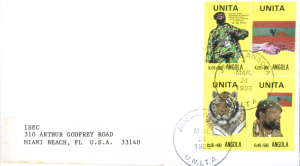 Figure 25. The rogue French stamp dealer Marc Rousso held a news conference at the AMERIPEX 86 international stamp exhibition in Chicago to promote the UNITA propaganda labels on this cover as postage stamps of the guerrilla organization backed by South Africa and the U.S. Central Intelligence Agency.
Figure 25. The rogue French stamp dealer Marc Rousso held a news conference at the AMERIPEX 86 international stamp exhibition in Chicago to promote the UNITA propaganda labels on this cover as postage stamps of the guerrilla organization backed by South Africa and the U.S. Central Intelligence Agency.
A reporter asked the UNITA spokesman who accompanied Rousso how Angolans used the stamps in Jamba, where this cover was supposedly mailed. The man answered, “We don’t use the stamps. Those are for collectors.”
AMERIPEX provided me with an opportunity to meet unobtrusively with SAMRAF comrades in Chicago, and World Stamp Expo provided a similar opportunity for a meeting at Washington in 1989. No one had to notify me in advance the time and place of our meeting; they just sent someone to the show to fetch me.
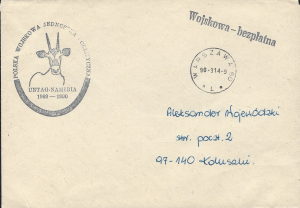 Figure 26. Members of 50 countries’ armed forces constituted the United Nations Transition Assistance Group (UNTAG) to monitor and guarantee the transition to democracy in Namibia in 1989 and 1990. This cover was sent by a Polish UNTAG soldier.
Figure 26. Members of 50 countries’ armed forces constituted the United Nations Transition Assistance Group (UNTAG) to monitor and guarantee the transition to democracy in Namibia in 1989 and 1990. This cover was sent by a Polish UNTAG soldier.
A cease fire in the Border War in 1988 finally laid the groundwork for the transition of power to the African majority. The United Nations Transition Assistance Group (UNTAG), source of the Figure 26 cover, was a peacekeeping force deployed in Namibia from April 1989 to March 1990 to monitor the peace process and the democratic elections, which were held in November 1989.
SWAPO won decisively. A new constitution was adopted in February 1990. Sam Nujoma, who had been the president of SWAPO since 1960, became the first prime minister of independent Namibia. I like the 1991 registered cover in Figure 27 because it shows the old SWA envelope overprinted with the new REPUBLIC OF NAMIBIA name, and combines a pre-independence SWA Frama stamp with stamps inscribed Namibia.
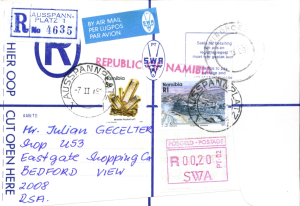
Figure 27. The Republic of Namibia overprint on this South West Africa registry envelope and the combination of SWA and Namibia stamps well illustrate the postal aspects of the political transformation.
On February 11, 1990, South African President Frederik Willem de Klerk lifted the ban on the African National Congress, freed ANC leader Nelson Mandela and other political prisoners, and took steps to end the apartheid system.
Mandela had spent 27 years in prison. As part of his triumphant world tour he came to the United States in June 1990. 750,000 people attended his ticker-tape parade in New York City. He insisted on making time to meet with and thank American anti-apartheid activists before proceeding to Washington for a meeting with President George Bush at the White House.
On June 22, 1990, about 100 anti-apartheid activists from 49 cities in 29 states gathered at the Community Church of New York to welcome the man who symbolized our cause, and to receive an all-day briefing on the ANC’s plans going forward. Mandela thanked, embraced, and shook hands with each of us individually before moving on to his next destination.
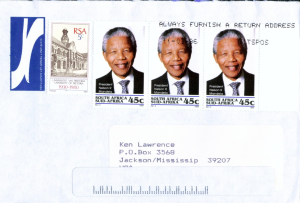
Figure 28. Stamps of South Africa that pictured President Nelson Mandela showed the world that apartheid had passed into history, replaced at long last by inclusive democratic government.
In 1994 South Africa held its first free election. The African National Congress won by a landslide, and Mandela became the president. If he had been running for president of the whole world he would have won handily.
Phase One of African liberation had at last been achieved after a half century of sustained Pan-African struggle and global solidarity.
Black majority rule has not put an end to the sad legacy of imperialism and apartheid, but it has freed Africans of the most heartless and most prolonged barrier to peace, prosperity, economic opportunity, and human dignity.
 Photo of Nelson Mandela thanking the American anti-apartheid activists who gathered in June 1990 at the Community Church of New York to welcome him. Credit the African Activist Archive.
Photo of Nelson Mandela thanking the American anti-apartheid activists who gathered in June 1990 at the Community Church of New York to welcome him. Credit the African Activist Archive.
Amilcar Cabral, who founded and led the African Party for the Independence of Guinea and Cape Verde (PAIGC) until he was assassinated by the Portuguese secret service in 1973, famously taught, “Tell no lies. Claim no easy victories.” His lesson became the watchword of African liberation solidarity movements.
In the spirit of Cabral’s counsel I have shared with you some true stories from my life as an activist. Yet, as I tried to illustrate when I began, fiction sometimes serves as a more effective political medium than memoir. Alan Paton described his first and best known novel, Cry the Beloved Country, as “a compound of truth and fiction. . . . In these respects therefore the story is not true, but considered as a social record it is the plain and simple truth.”
For that we all should strive.

